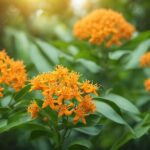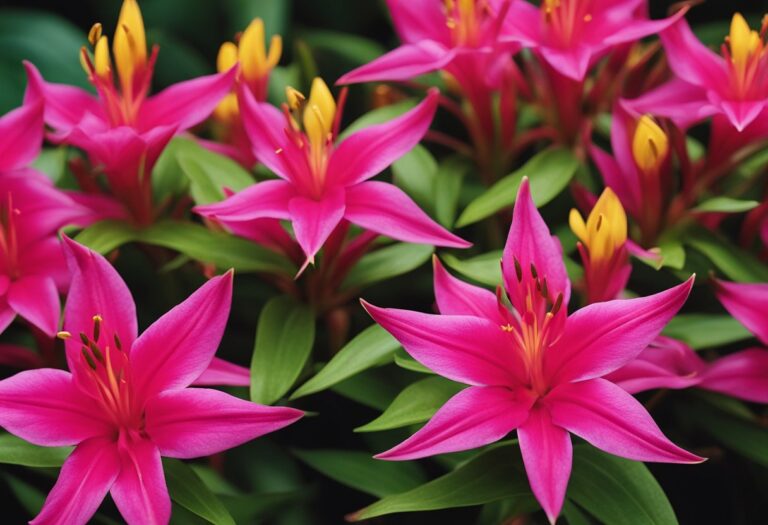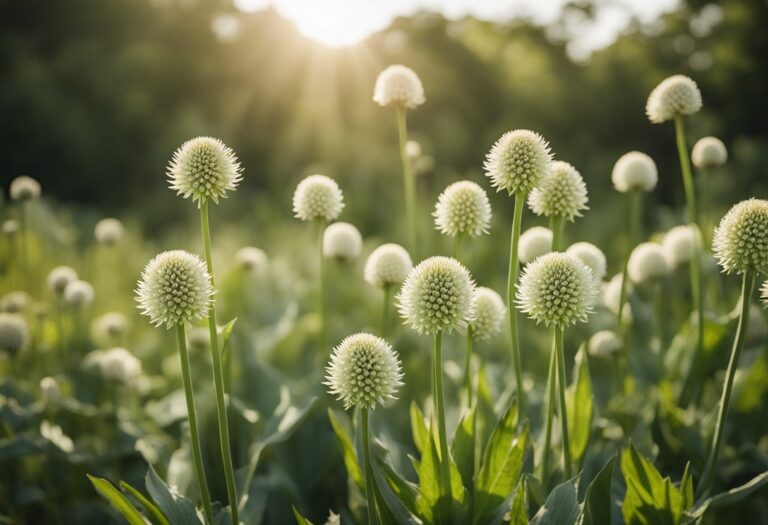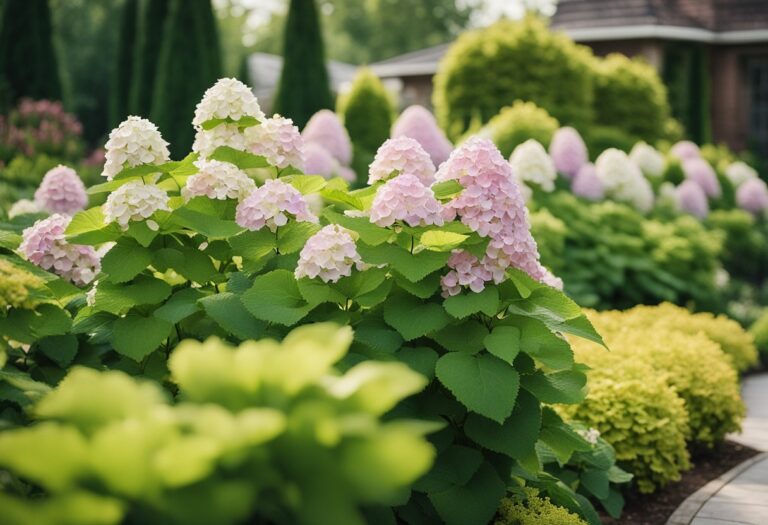Overview of Scotch Thistle
Scotch Thistle (Onopordum acanthium), or cotton thistle, is a robust flowering plant within the family Asteraceae. It originated from Europe and Western Asia, and has since spread to various parts of the world. Notably, it is considered an invasive species in North America.
Appearance:
- First year: Forms a large rosette of prickly leaves.
- Second year: Produces tall stems and flower heads in early summer.
Habitat: The plant thrives in disturbed soils and can be commonly found in pastures, along roadsides, and in uncultivated fields.
Impact:
- Agriculture: Scotch Thistle can reduce pasture productivity and is a nuisance in agricultural lands due to its size and spiny nature.
- Ecology: It competes with native flora for resources and can dominate landscapes, hindering wildlife’s access to forage.
Management: Efforts to manage Scotch Thistle may include mechanical methods, such as mowing and tilling, and chemical controls using herbicides. Preventing seed dispersal is crucial, as the plant mainly propagates through wind-dispersed seeds.
Identification and Characteristics
Scotch Thistle is identified by specific features, which vary from its spiny stems to its unique seed dispersion methods.
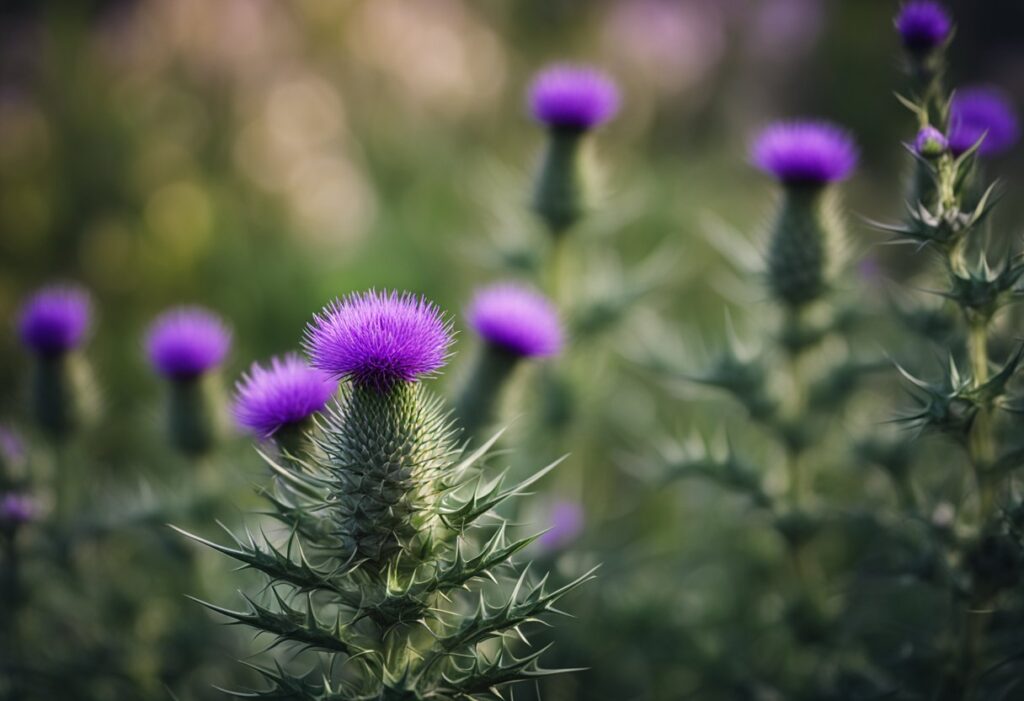
The stem of a Scotch Thistle is branched and can grow 6 to 8 feet tall. Your first clue to its identity is the leaves lobed with spiny margins. These leaves can create a rosette up to 6 feet wide and will often have a greyish-green appearance due to a covering of fine white hairs.
Flower Heads
The flower heads of the Scotch Thistle are distinct. You’ll typically see globe-shaped purple flowers, about 1 to 2 inches in diameter. These flowers are encased in stiff, spiny bracts, and stand out due to their size and vibrant color.
Seeds and Dispersion
Scotch Thistle seeds are notable for their longevity; they can remain viable in the soil for up to 20 years. The plant utilizes the wind for dispersion, which contributes to its invasive nature along with its prolific seed production. Keep an eye out for these seeds, as their persistence means Scotch Thistle can spread rapidly across different terrains.
Habitat and Distribution
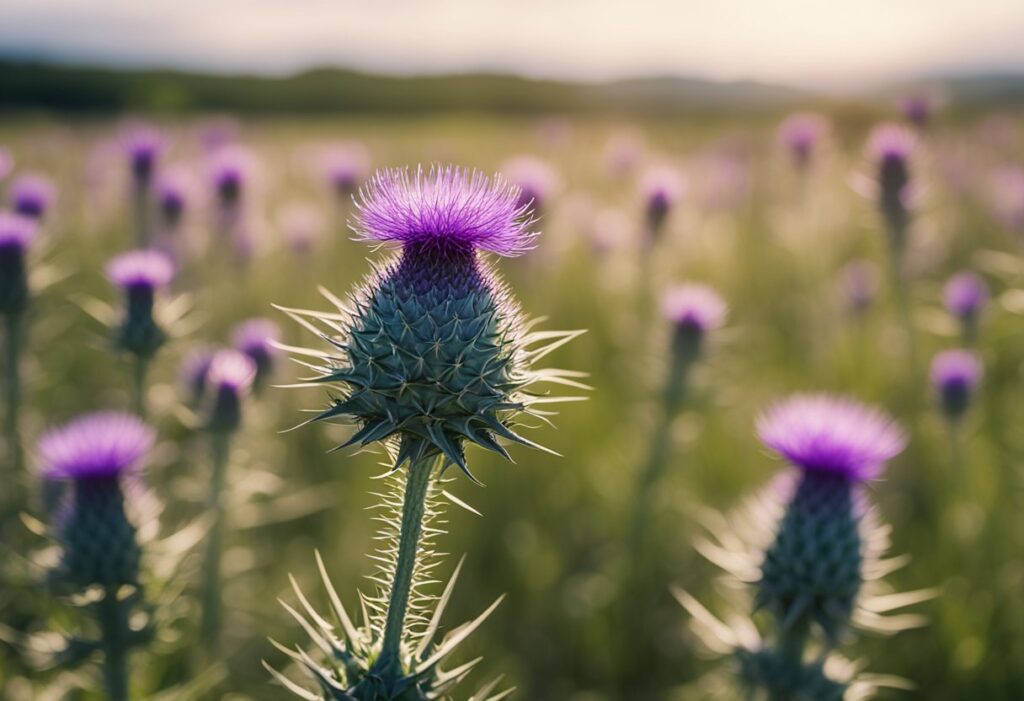
Scotch Thistle (Onopordum acanthium) is a biennial plant known for its invasive characteristics. Originally native to Europe and Western Asia, this species has spread to many other parts of the world, including North America, where it is widely naturalized.
In its native habitat, you can find Scotch Thistle growing in a variety of settings such as:
- Grasslands
- Roadsides
- Open fields
The plant is highly adaptable and thrives in areas that have been disturbed, which often leads to its problematic and invasive spread. Its ability to grow in various soil types contributes to its success in colonizing new areas.
In the United States, Scotch Thistle is particularly pervasive. It’s known for forming dense thickets that can overwhelm natural landscapes and agricultural areas, leading to economic and environmental impacts.
Key aspects of its distribution include:
- Dispersal: Seeds are primarily spread by wind, but also by water, animals, and human activity.
- Climate Tolerance: It tolerates various climate conditions but prefers cooler temperate regions.
Control Methods
Effective control of Scotch Thistle involves a combination of mechanical, chemical, and biological strategies. The appropriate method is selected based on the infestation size and the specific conditions of the affected area.
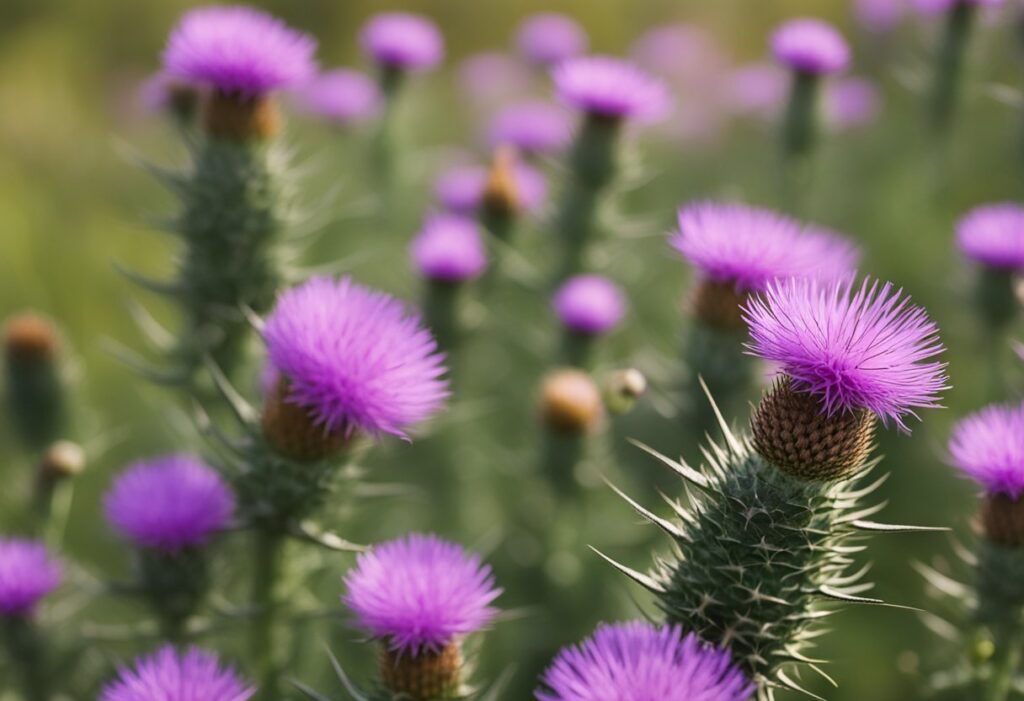
For small infestations, manual removal of Scotch Thistle can be effective. To prevent further spread, uproot the plants before they set seed. Wear protective gloves and use tools such as a shovel to remove the entire root system.
- Mowing or Cutting: Repeatedly cut down Scotch Thistle to ground level to deplete the plant’s energy reserves.
Chemical Control
Herbicides can be a viable option for controlling larger infestations. Ensure you follow all label instructions to apply the correct dosage and minimize environmental impact.
- Selective Broadleaf Herbicides: Effective in grassy areas, targeting the thistle without harming the surrounding grasses.
- Pre-emergent Herbicides: Used to prevent the germination of Scotch Thistle seeds.
| Active Ingredient | Product Rate | Application Timing |
|---|---|---|
| 2, 4-D | Varies | Spring to early summer |
| Glyphosate | Varies | When thistle is actively growing |
Biological Control
Biological control uses natural predators to manage Scotch Thistle populations. This can be a long-term solution but requires careful consideration of potential impacts on the ecosystem.
- Weevils: Certain weevil species feed on thistle seeds and can reduce seed production.
- Fungal Pathogens: Pathogens such as Puccinia punctiformis can weaken thistles by causing disease.
Ecological Impact

When Scotch thistle (Onopordum acanthium) invades an area, you’ll notice several detrimental effects on the ecosystem. Firstly, due to its size and aggressive nature, Scotch thistle forms dense stands that stifle the growth of native flora. Biodiversity in these areas decreases by outcompeting indigenous plants for resources like sunlight, water, and nutrients.
Here are the key ecological impacts of Scotch thistle:
- Competition: It competes with and often overpowers local plant species.
- Forage Reduction: Its presence reduces the quality and availability of forage for wildlife and livestock because of its unpalatable and spiny characteristics.
- Biodiversity Loss: Local flora may decline, leading to reduced habitat complexity and support for wildlife.
Scotch thistle’s ability to thrive in a range of soil types also harms your local ecosystems, further aiding its spread. Due to its reproductive strategy, which only involves seed production, large numbers of seeds will be dispersed, enhancing its invasive potential.
Another consideration:
- Habitat Modification: Scotch thistle can alter physical and environmental conditions, indirectly impacting other species.
Frequently Asked Questions
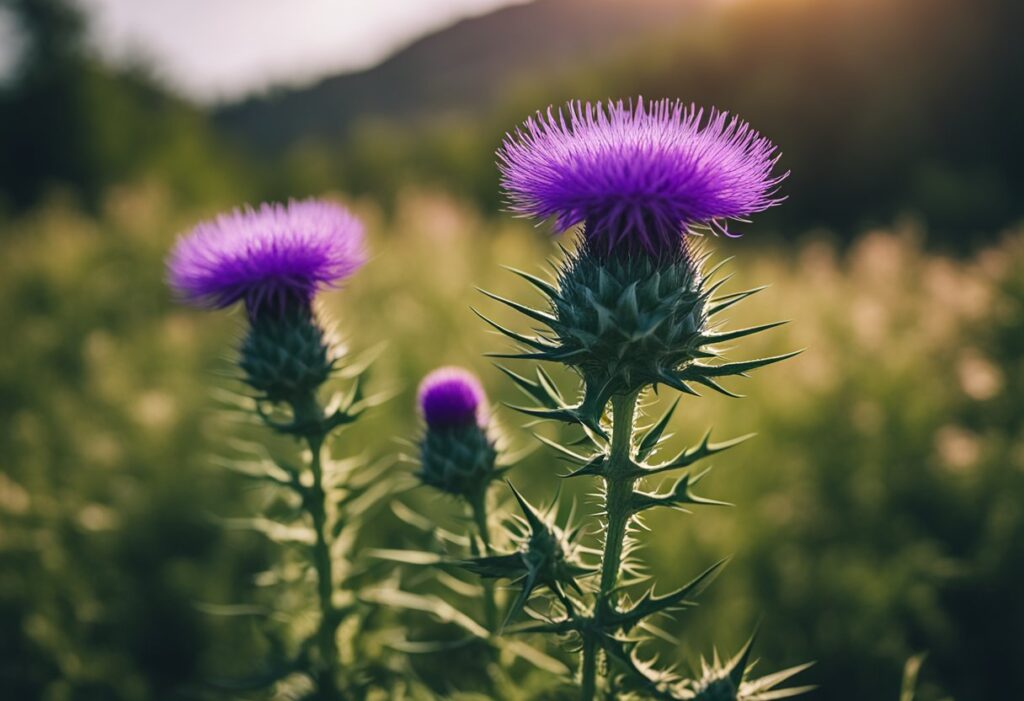
Scotch Thistle is a plant that raises many questions due to its invasive nature and unique characteristics. This section aims to answer the most common inquiries surrounding Scotch Thistle.
How can you identify a Scotch thistle?
Scotch thistle is identified by its large, prickly leaves and tall stems, which can grow up to 6-8 feet. Its leaves are sharp-edged and hairy, and in the second year, it produces globe-shaped purple flowers.
Are Scotch thistles considered invasive, and if so, where?
Yes, Scotch thistles are considered invasive, especially in parts of North America where they were introduced in the late 19th century. They originate from Eurasia and are problematic in various regions including the Pacific Northwest.
What are the uses of Scotch thistle?
Various cultures have traditionally used Scotch thistle for ornamental purposes due to its striking flowers. However, its invasive nature often overshadows these uses.
Can Scotch thistle be used for medicinal purposes?
Historical references to the medicinal use of Scotch thistle, including its use in folk medicine, exist. However, any medicinal application should be cautiously approached under professional advice, as scientific evidence is limited.
What are the effective methods for controlling or eradicating Scotch thistle?
Controlling or eradicating Scotch thistle involves routine monitoring of properties to remove young plants. Cleaning equipment and clothing of plant residues helps prevent spread, and herbicides can be used by local guidelines.
Is there any toxicity concern associated with Scotch thistle?
Scotch thistle is not commonly known for being toxic. However, it is always wise to handle plants with care, as individual reactions to plant materials can vary.
Always wear gloves and protective clothing when dealing with Scotch thistle to prevent skin irritation.





